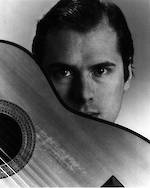Babbitt & Boulez
The poetics of the music of Pierre Boulez, I contend, are close to the development we see from Poe through Boudelaire and Mallarme to Valery. Boulez most likely began with an interest in having his techniques have nothing to do with what's heard, as Taruskin correctly outlines, but Boulez liked what he heard. With Le Marteau, he became a composer, by which I mean that we hear a sensibility and regardless of how revolutionary he thought he had to be, his music was speaking strongly, with a definite sensibility. He employed his Webern-inspired techniques to make something that sounds exotic, but so much more was happening in the process, and perhaps even those things he didn't know he was controlling begins to define his voice.
He was not concerned, as Babbitt always was, with finding weird ways of being rather traditional. With Boulez there is this lineage:
Mallamé & Debussy Frenchifying Wagner ----> Valery exploring very complex (poetic) modalities to serve his desire to achieve a potent *indefiniteness*, along the lines of Mallarme, Baudelaire, and Poe--this triumvirate leading to the French way of arriving at Wagner's symbolism.---> Boulez, in a similar spirit, explored very complex musical modalities inspired by Webern, thereby *Frenchifying Webern*. All along, in French music there is an inclination toward exoticism, a de-coupling of effect from modality. Essential for understanding Boulez is how this relates to Poe-->Baudelaire-->Mallarme (Debussy)-->Valery
Boulez (& Valery?) were interested in positivism, but at the service of Symboliste *indefiniteness*. What will require much more explaining is how potent Wagner was in this equation. His work set much of this into motion.
Debussy & Mallarme shared a great love for Wagner's work, yet had to find their own way to achieve their authentic and potent symbols. The connections between Wagner, the Symbolistes, and the Pre-Raphaelites are all explained very nicely in Arthur Symon's book, *The Symbolist Movement in Literature*. The complexity and systematic quality of Valery's work is suggested in Edmund Wilson's book, *Axel's Castle*.
I think that's clear, but needs to be fleshed out.
Babbitt's poetic ancestry looks like this:
Bach: His A section goes from I to V; his B section from V to I; and therefore, the tunes in the A section should be inverted in the B section. Wagner: Tristan Chord/Dominant 7 chord two chords that are inversions of each other are a Talisman of Love/Death; the Western yin/yang----> Brahms: Exploring proto-Schoenbergian inversion in a brilliant way, but defiantly reactionary, in opposition to Wagner.----> Schoenberg: "I can do what Brahms does in op. 114 last movement, and elsewhere, *but without the functional harmony*.
Magic squares are still, poetically the Wagnerian yin/yang.
Babbitt: his arrays---> prime and inversions paired with each other, and all over Babbitt's music the inversional pairs are invariants. When you M5 the array, the inversional pairs are reordered, but no new ones appear and none go away.
While Babbitt did not speak much about the poetics of his music, he did have a pop song that he connected with what I call the Weltschmertz chord in Swan Song--the Brahmsian "major 7" chord. Moreover, he was clearly fascinated by the inversional pairs. I do not think it is a stretch to see that they lit a fire under him, and he managed to make them drive some very remarkable and little-understood masterworks.
Fact is, there is much in Swan Song that is love/death whether Babbitt thought like this or not.
There are traditional things that Babbitt always cared about, things that early Boulez & Stockhausen felt should be left in the past -- how do harmonies work, what is a phrase, what is a musical event, etc.
Babbitt cared about finding his own weird way of projecting those things, but his weird way makes it difficult.

